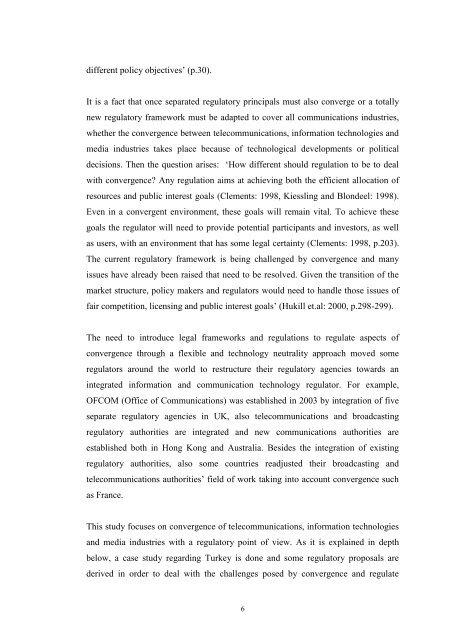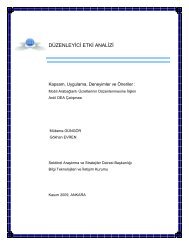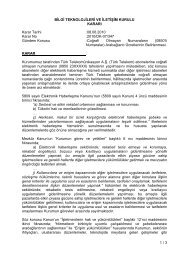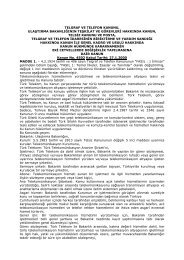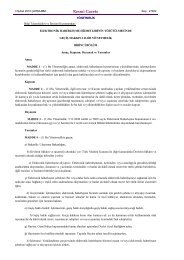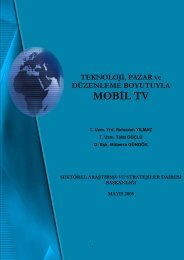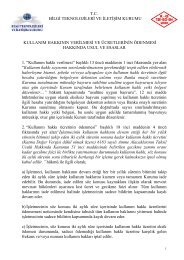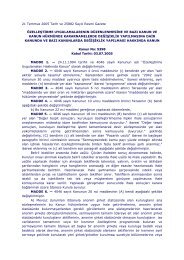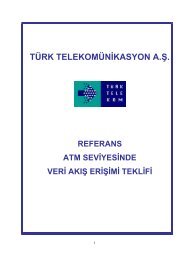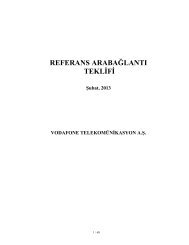city university london school of social sciences convergence of ...
city university london school of social sciences convergence of ...
city university london school of social sciences convergence of ...
You also want an ePaper? Increase the reach of your titles
YUMPU automatically turns print PDFs into web optimized ePapers that Google loves.
different policy objectives‟ (p.30).It is a fact that once separated regulatory principals must also converge or a totallynew regulatory framework must be adapted to cover all communications industries,whether the <strong>convergence</strong> between telecommunications, information technologies andmedia industries takes place because <strong>of</strong> technological developments or politicaldecisions. Then the question arises: „How different should regulation to be to dealwith <strong>convergence</strong>? Any regulation aims at achieving both the efficient allocation <strong>of</strong>resources and public interest goals (Clements: 1998, Kiessling and Blondeel: 1998).Even in a convergent environment, these goals will remain vital. To achieve thesegoals the regulator will need to provide potential participants and investors, as wellas users, with an environment that has some legal certainty (Clements: 1998, p.203).The current regulatory framework is being challenged by <strong>convergence</strong> and manyissues have already been raised that need to be resolved. Given the transition <strong>of</strong> themarket structure, policy makers and regulators would need to handle those issues <strong>of</strong>fair competition, licensing and public interest goals‟ (Hukill et.al: 2000, p.298-299).The need to introduce legal frameworks and regulations to regulate aspects <strong>of</strong><strong>convergence</strong> through a flexible and technology neutrality approach moved someregulators around the world to restructure their regulatory agencies towards anintegrated information and communication technology regulator. For example,OFCOM (Office <strong>of</strong> Communications) was established in 2003 by integration <strong>of</strong> fiveseparate regulatory agencies in UK, also telecommunications and broadcastingregulatory authorities are integrated and new communications authorities areestablished both in Hong Kong and Australia. Besides the integration <strong>of</strong> existingregulatory authorities, also some countries readjusted their broadcasting andtelecommunications authorities‟ field <strong>of</strong> work taking into account <strong>convergence</strong> suchas France.This study focuses on <strong>convergence</strong> <strong>of</strong> telecommunications, information technologiesand media industries with a regulatory point <strong>of</strong> view. As it is explained in depthbelow, a case study regarding Turkey is done and some regulatory proposals arederived in order to deal with the challenges posed by <strong>convergence</strong> and regulate6


